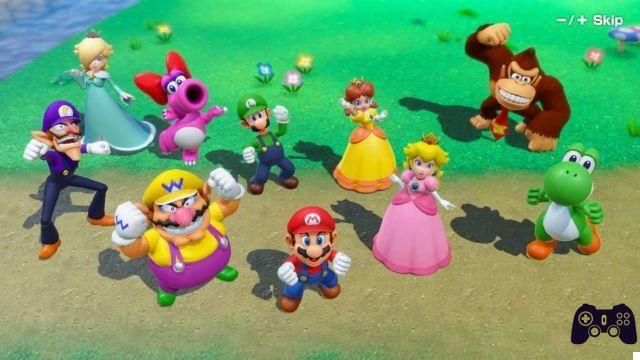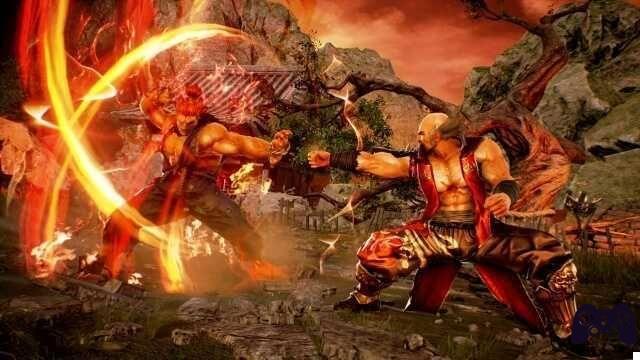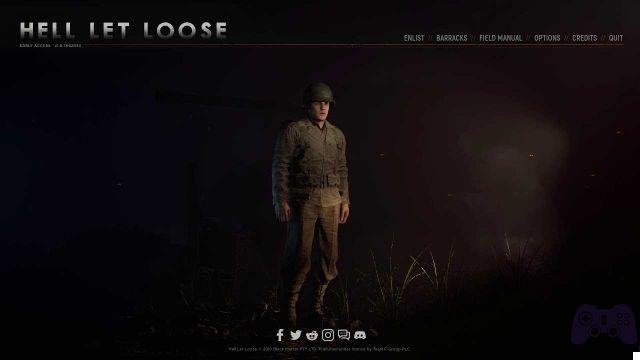Welcome back to the ninth installment of our in-depth guide to Super Smash Bros. Ultimate's stellar cast of playable characters
In this ours guide, we will devote ourselves to the many characters playable of Super Smash Bros. Ultimate, starting with Mario up to the latest additions of the second Fighters Pass. In each episode we will describe about five or six fighters, however, dividing them according to the chapter of Smash in which they made their debut. This time we will begin to dissect the roster of fourth smash (Super Smash Bros. for Nintendo 3DS and Wii U, il cui for vale come four, four), starting from the first rookies unveiled at E3 2013. We will therefore talk about theInhabitant, of Mega Man, of two Wii Fit trainer, of Rosalinda and Sfavillotto, and finally of Little mac. In the appendix, we will talk about the special indicators.
Quick Preamble
Before moving on to the characters, let's clarify the fulcrum of the guide: in Super Smash Bros. Ultimate the task of each player is to throw opponents off the screen, fighting in arenas that mix the genre of fighting with elements of platformer (X and Y allow you to jump). The A and B keys, used in combination with the various directions, give life to the most disparate moves, as well as the back keys to manage shields, dodges and holds. The game also implements tools that irremediably alter the fate of each encounter, but in this guide we will basically focus only and only on the characters themselves. Increasing the opponent's damage will make him lighter and, therefore, vulnerable.
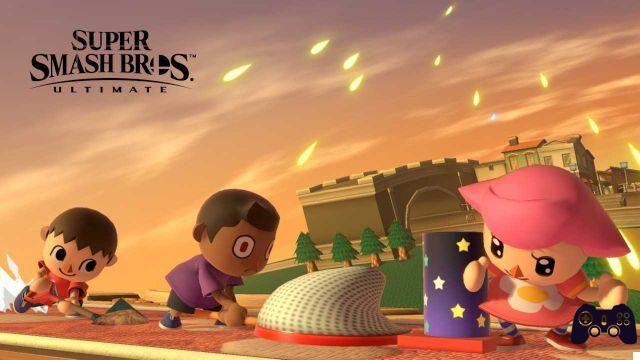
Villager - Super Smash Bros. Ultimate Character Guide
It seemed like yesterday, but we've come a long way since the first episode of the guide. Now, with theInhabitant in the first trailer of the fourth Smash we came to the first use of the coveted invitation letter to join the roster. The avatar of Animal Crossing - after Brawl limited the series' representation with the Smash Village arena (above) - it brings with it a far from conventional arsenal, as we'll see shortly.
- Franchise of origin: Animal Crossing, Balloon Fight (si veda Gameplay)
- Origins: The Animal Crossing series was born in 2001 on the Nintendo 64 as Dōbutsu no Mori, in English Animal Forest. We didn't mention the Japanese title at random: the game was released in the West only a year later, with the port / remake (a little and a little) for the Nintendo GameCube called Animal Crossing - Population: Growing !. With each new episode, the series of life simulators it has carved out a larger and larger slice of fans, thanks to the aspects that have gradually made it the less realistic (and therefore more intuitive) alternative to The Sims. The latest episode, New Horizons, was released on the Nintendo Switch and is a regular presence on our Monday news.
- Gameplay: The mechanics that distinguish the Dweller is his ability to pocket every bullet that is thrown at him. In your pocket! (B), exclamation point included, allows you to keep bullets and tools aside and then extract them and / or throw them at the opponent at any time. In Ultimate, the pocketed item appears above the dammeter, as we will see at the end. Gironio rocket (↔ + B) extracts the bullet of the same name and can be used in two ways: by pressing only B to launch the Gironio, or by holding down the button to ride the missile. In a quote to Balloon Fight (or the NES games from the first Animal Crossing in general), Flight with balloons (↑ + B) allows you to gain altitude by repeatedly pressing B. This is one of the best recovery moves in the game. Instead Woodcutter (↓ + B) allows you to first plant a seed, then to water it (again ↓ + B) and finally to cut the tree down with an ax (again ↓ + B). The trunk, falling, proves to be a devastating attack ... and, as a bullet, pocketable in turn!
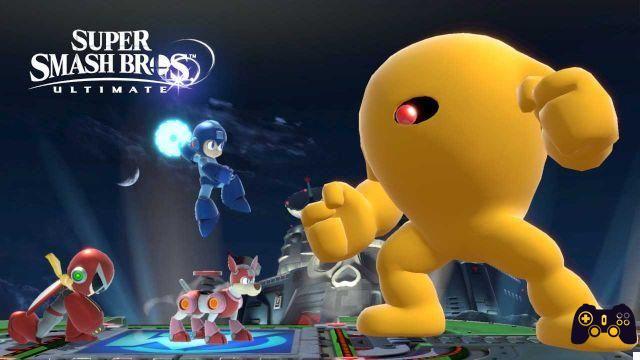
Mega Man - Super Smash Bros. Ultimate Character Guide
After Konami with Snake and SEGA with Sonic, the third guest among the characters in the guide to Super Smash Bros. Ultimate could only be the face (at the time given up) of Capcom. The blue bomber, Mega Man, rises from the videogame ashes with a moveset that draws on the entire output of the classic incarnation on NES and Super Nintendo.
- Franchise of origin: Mega Man
- Origins: Just as Mario and Donkey Kong were born in 1981 as transoceanic equivalents of Popeye and Bluto, Mega Man (or Rockman in Japanese) made its debut in 1987 after obtaining the rights to Astro Boy turned out to be impossible. In his games, of which the Kirby series is the antithesis for difficulty, Mega Man acts on behalf of the pacifist Thomas Light, its creator. Dr. Light's robots, born to help humanity, have been reprogrammed by academic rival Albert Wily. To save the world, Light transformed his trusty assistant Mega Man into a fighting robot capable of absorbing the abilities of the bosses he defeats. In each game in the saga, Mega Man puts together a different arsenal based on the Robot Masters he gets out of the way.
- Gameplay: In Smash, on the other hand, Mega Man boasts a collection of moves that draws on the entire series of origin. This character stands out in the use of bullets, which in his case also make up the standard attacks (A) and the powerful lateral attacks (↔ + A). Metal blade (B) Throws Metal Man's circular saw, but it can be intercepted and picked up (A). Crash Bomber (↔ + B) instead allows you to shoot Crash Man's sticky bomb: the opponents on which the bomb is attached have little time to pass the hot potato to others. Rush Coil (↑ + B) summons Mega Man's robot dog, Rush, for a retrieval move similar to Sonic's spring. Leaf Shield (↓ + B) generates Wood Man's tree shield, but unlike Mega Man 2 and the fourth Smash, in Ultimate the projectile is launched automatically.
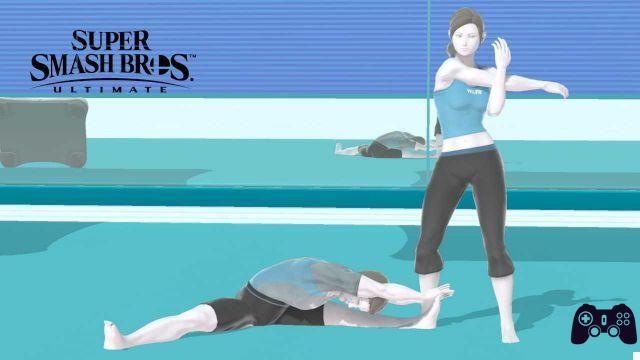
Wii Fit Trainer - Super Smash Bros. Ultimate Character Guide
The two yoga instructors, not unlike Olimar and Pichu, represent the ideal of a character who needs the right hands to reach the summit. Masahiro Sakurai included i Wii Fit trainer for the explicit purpose of throwing a curve ball at the players, while giving life to a character as unpredictable as lethal in his unusual skills on the pitch.
- Franchise of origin: Wii Fit
- Origins: “My body is ready”, so began the then president of Nintendo of America Reginald “Reggie” Fils-Aimé as he stepped onto the Wii Balance Board. This peripheral, in effect a scale, allowed Wii users new experiences: from the simulation of the skateboard to a fitness app such as Wii Fit. The silhouette that explained to us how to perform the necessary bends entered the Smash roster almost by chance, but now that it is there we would hardly know how to do without it.
- Gameplay: Every move, move, powerful attack, special attack or Smash attack of the two Wii Fit Trainers, good or bad, comes from the original game. The sun salutation (B) is not a Dark Souls quote, but a similar bullet to the one seen with Samus. Head shot (↔ + B) throws a soccer ball and then heads it. Super rims (↑ + B) allows for gentle upward motion, but can also deal damage if Hula Hoop hoops hit an opponent. Deep breathing (↓ + B) is one of the secrets that make this character competitive: not only by pressing B (or releasing it if you hold it down) when the two circles touch each other scales 2% damage from the dammeter, but for twelve and a half seconds the character will be stronger in attack and defense. The standard hitch in place (A) can bury the opponent, and the side Smash attack (right analog lever) allows, like most of the Smash below (Trainer included), to hit from both sides.
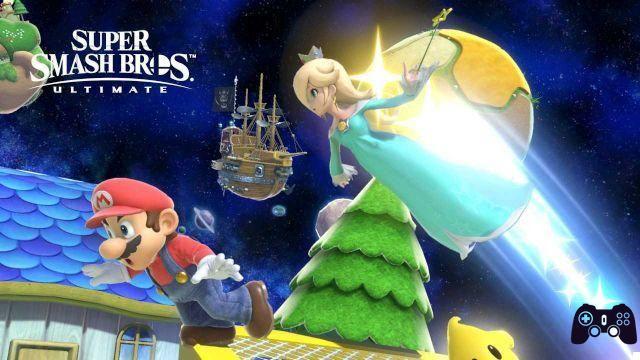
Rosalind and Luma - Super Smash Bros. Ultimate Character Guide
Of all the characters born as a replacement, as we saw in the guide with Ike and Lucario, the debut of Rosalinda in Super Smash Bros. Ultimate it is undoubtedly the most particular case. The Ice Climbers, causing a crash in the Nintendo 3DS version, had to give way to someone able to take advantage of their desync mechanics more clearly. With the help of Luma, the goddess of the cosmos can do exactly that.
- Franchise of origin: Super Mario
- Origins: Peach's "cosmic" counterpart, Rosalinda made her entrance on the scene - appropriately - with Super Mario Galaxy for Wii (2007). A give In all but the name, this orphan wanders the universe taking care of the Luma, a stellar version of the Toad. Mario bumped into her by accident, but Rosalinda's help proved invaluable in finding Bowser too. at the center of the universe.
- Gameplay: The Luma reply every attack by Rosalinda performed with A and the right analog stick, but the player can establish freely when the two have to separate. I shoot Luma (B) is for exactly that, as well as boasting of its own offensive power. The longer you hold B, the farther Luma flies. The Star Bits (↔ + B) instead allow you to fire the homonymous bullets of Super Mario Galaxy at close range. Stellar leap (↑ + B) generates a disposable Throwing Star, but despite appearances it is directional like Fire Fox, Fire Hawk and Fire Wolf. Force of gravity (↓ + B) has more effects: it draws tools to itself if they are present on the field, absorbs bullets and summons the Luma. If the latter succumbs, unlike the second Ice Climber can regenerate without having to lose a life.
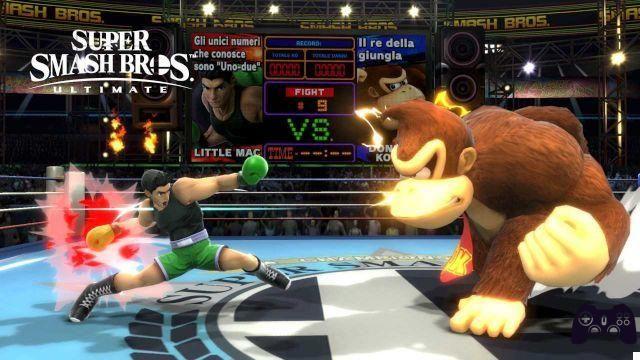
Little Mac - Super Smash Bros. Ultimate Character Guide
Nintendo's living tribute to Rocky Balboa, after a muted debut in Brawl as an assistant, finally becomes a full-fledged fighter. Charging from the Bronx like a raging bull, Little mac beats time (in a way) Ryu, Ken and Terry as the representative of a "real" fighting game.
- Franchise of origin: Punch-Out !!
- Origins: The Punch-Out !! series was born on NES as Mike Tyson's Punch-Out !!, before the deal with the boxer fell apart due to the infamous incident in the ring. Subsequently, the game hit shelves simply with today's title, replacing Tyson with “Mr. Dream ”as the final boss. Later, the lesser known Super Punch-Out !! gave Little Mac an unprecedented blonde hair (in Smash it is an alternate costume), before - except for one appearance in Fight Night Round 2 as a guest - the series fell into oblivion. After the cameos of the Bronx scion in Brawl and the Japanese exclusive Captain Rainbow, the remake / reboot on Wii entitled only Punch-Out !! brings the character back into the spotlight. His mentor, the former boxer Doc Louis, occasionally comments on his matches in Smash (and appears on the victory screen).
- Gameplay: On his own, Little Mac grabs the whole topic in the appendix. With his debut, the character brings in Smash a separate indicator next to the percentage of damage, which indicates how long it takes to load his ace up his sleeve. Direct lunge (B) begins to charge a very strong punch, which at full charge proves to be devastating but which also boasts an "incomplete" version (again B). When the already mentioned outside KO is full, however, the shot becomes a deadly riser at close range. Sloping lunge (↔ + B), on the other hand, is a downward punch with a run-up. Supermontant (↑ + B) boasts an average vertical distance, but as a recovery move it fits into the (bad) mosaic of Little Mac's aerial game, which needs to be on the ground to perform at its best. Dodging and counterattack (↓ + B) predictably describes itself.
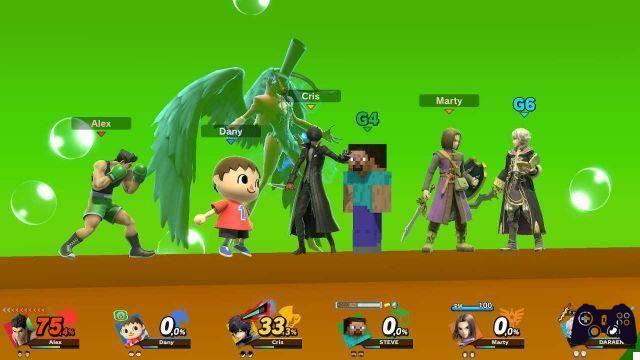
Concluding details, ninth episode: special indicators for the dammeter
Before leaving, even today we are going to analyze an aspect of the guide that goes beyond the individual characters of Super Smash Bros. Ultimate… well, more or less. From the Dweller on, most of the roster boasts a extra indicator above the damage percentage. Typically, those with additions of this type have a mechanic that is unique to him or her. We saw him with Little Mac and his outside KO, we also see it with the Dweller who in Ultimate enjoys an indicator for the last opponent's tool or attack put in your pocket, but from here on the mechanics exclusive to the characters could really be done out of mind.
Fortunately, Ultimate has also included in the pause menu one of the features that have always distinguished the fighting game genre: a move list. For each character, it is possible to consult special moves and peculiar mechanics during a match, so as not to be caught off guard. In the next installment we will talk about Miis and their customizable moves, so you should prepare yourself for the idea. We do not intend to replace the move list; our guide is alone a supplement.
That's all for today: how are you finding yourselves so far? (You can find the summary here.) Please let us know by leaving us a comment below, and don't forget to stay on Holygamerz to not miss any news from the videogame world and beyond.




